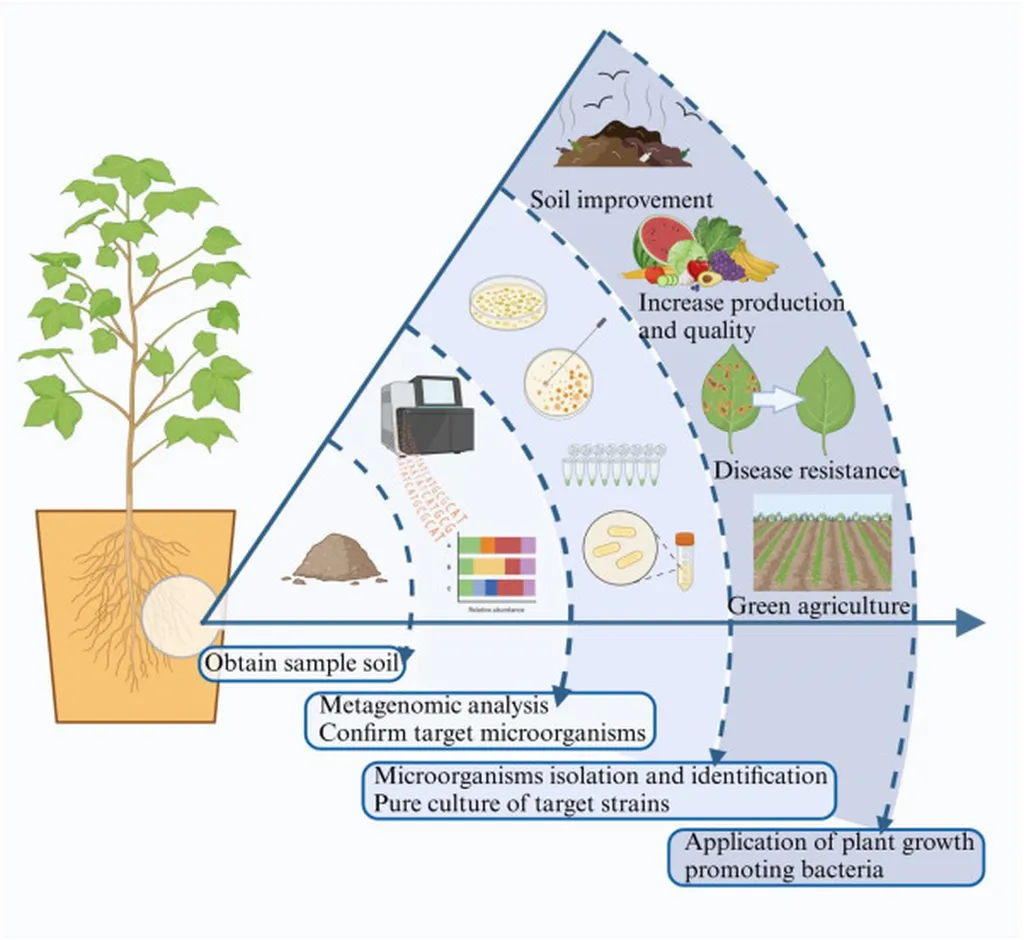In the rolling landscapes of Guizhou province, a quiet revolution is underway, one that could reshape how we understand the delicate dance between soil and crop. Researchers, led by Taige Yu from the College of Agronomy and Biotechnology at China Agricultural University, have been delving into the mysteries of the rhizosphere—the thin layer of soil that clings to plant roots—and its influence on tobacco growth after land consolidation. Their findings, published in the journal *Scientific Reports* (translated as “Scientific Reports” in English), challenge some long-held assumptions and open new avenues for agricultural innovation.
Land consolidation, the process of merging small, fragmented plots into larger, more manageable ones, has been a cornerstone of modern agricultural development. It promises efficiencies in management and mechanization, but its impact on soil health and crop performance is less clear. Yu and his team set out to investigate whether the biochemical properties and enzymatic activities of rhizosphere soil could predict tobacco growth outcomes. What they found was both surprising and thought-provoking.
“We expected to see significant differences in soil properties between tobacco plants with good and bad growth performance,” Yu explained. “But our results showed no such differences. The biochemical properties, soil quality index, and enzymatic activities were remarkably similar across the board.” This suggests that the rhizosphere soil’s inherent properties may not be the primary determinant of tobacco growth after land consolidation.
The study also revealed that soil microbial activity was primarily limited by phosphorus, but there were no significant differences in carbon, nitrogen, or phosphorus limitations between the two growth performance categories. Perhaps most intriguingly, soil ecosystem multifunctionality—its ability to perform multiple beneficial functions simultaneously—showed no significant correlation with tobacco plant performance.
So, if not the soil’s biochemical properties, what factors are influencing tobacco growth? Yu and his team speculate that microbial communities and management practices may play a more significant role. “This research highlights the complexity of soil-plant interactions,” Yu noted. “It’s a reminder that agriculture is not just about the soil or the plant in isolation, but about the intricate web of relationships that exist between them.”
For the energy sector, particularly those involved in bioenergy crops or sustainable agriculture, these findings could have significant implications. As the world grapples with the need for more sustainable and efficient agricultural practices, understanding the nuances of soil-crop interactions becomes increasingly important. This research suggests that a one-size-fits-all approach to soil management may not be the most effective strategy. Instead, a more holistic understanding of the soil ecosystem, including its microbial communities and management practices, may be key to optimizing crop growth and yield.
The study also underscores the need for further research. As Yu and his team continue to explore these complex interactions, they hope to develop strategies that enhance tobacco production in post-consolidation environments. Their work serves as a reminder that in the quest for agricultural efficiency and sustainability, the answers may lie not just in the soil, but in the intricate relationships that exist beneath our feet.
In the meantime, farmers and agricultural practitioners may need to rethink their approach to soil management. Rather than focusing solely on soil properties, they may need to consider the broader ecosystem, including microbial communities and management practices. This shift in perspective could open up new possibilities for enhancing crop growth and yield, not just for tobacco, but for a wide range of crops.
As the world continues to grapple with the challenges of climate change and food security, research like this is more important than ever. It reminds us that the solutions to these complex problems may lie not just in technology or policy, but in the intricate web of relationships that exist in the natural world. And as we continue to unravel these relationships, we may find new ways to nourish and sustain both our crops and our planet.

